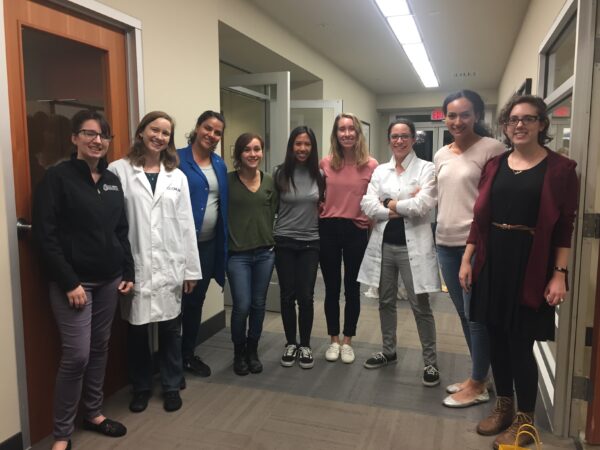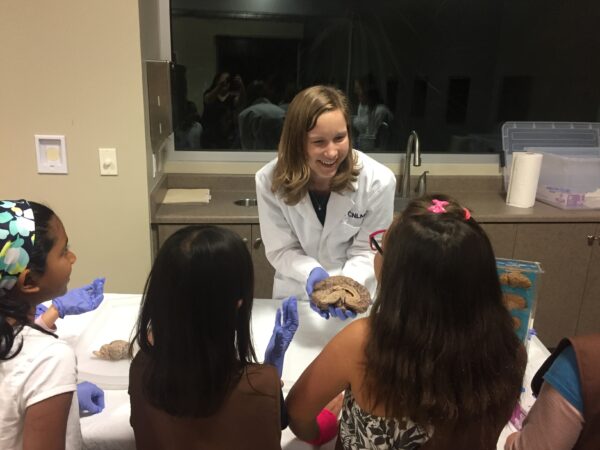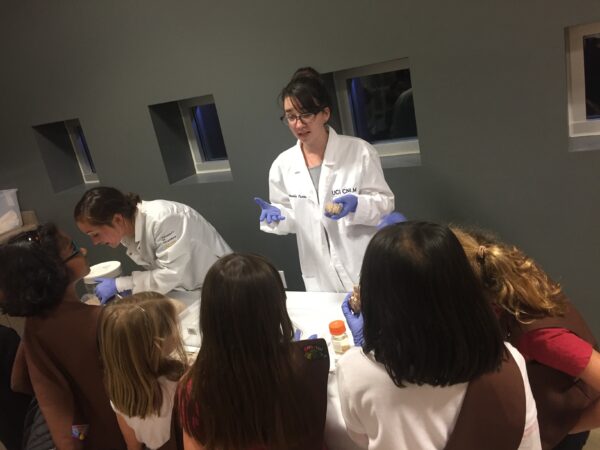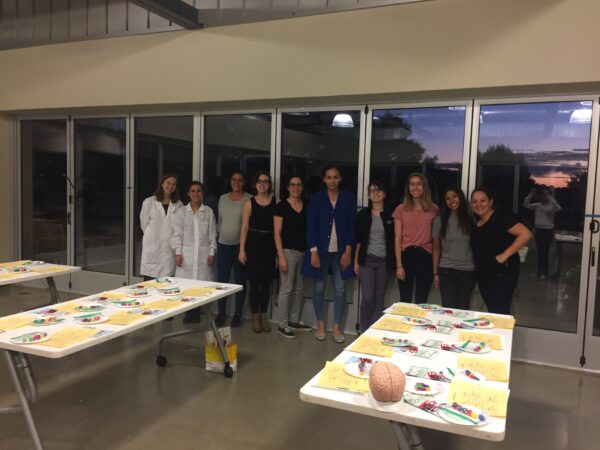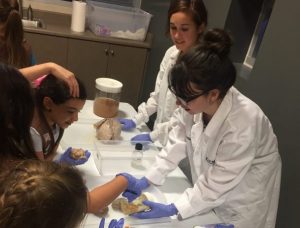CNLM Researchers take the Girl Scout Pledge
- MindBogglers workbook ✓
- Play-doh ✓
- Microscope ✓
- Model brains ✓
- Certificates of completion ✓
- Pencils and brain toppers ✓
- LOTS of stickers ✓
- A real human brain ✓
Earlier this month, 10 CNLM researchers, trunks full of materials, visited a Girl Scout Brownie Troop of Orange County for their bi-weekly meeting. The researchers (undergraduate and graduate students, postdoctoral fellows and research staff from various schools and departments across UC Irvine) are CNLM Ambassadors, a group of more than 40 brain scientists with one thing in common: an infectious passion for brain science and education.
The group, guided by Manuella Yassa, the CNLM’s Director of Outreach and Education, aims to make brain science accessible to all, from pre-schoolers to senior citizens. Programs this year have included visits to K-12 schools, community centers, and non-profit organizations in Orange County as well as tours of CNLM labs for older adults as well as at-risk teens.
Our visit to the Brownie troop was timely, given the Girl Scouts of America’s active interest in fostering exploration in STEM (Science, Technology, Engineering, Math) disciplines. The visit included a Q&A about the field of neuroscience, a real human brain demonstration, and two lab “rotations” – a wet lab and craft lab.
In the wet lab, the girls explored real specimens including brains of various organisms (human, sheep, cow, rat, cat). In the craft lab, the girls made brain models out of play-doh, each lobe in a different color. The Ambassadors guided the children through observation and exploration of the various parts of the brain, comparing the brains of the different organisms and relating the structures to functions.
“This is the olfactory bulb. The olfactory bulb carries information about smell from the nose into the brain so that we can figure out what we are smelling. What do you notice about the olfactory bulb of the human compared to the olfactory bulb of the sheep? Why is it that even though the human brain is much larger than the sheep brain, the olfactory bulb of the sheep is much larger than the olfactory bulb of the human?”
Rather than looking for correct answers, the CNLM Ambassadors aim to instill a curiosity and wonder about the brain and teach children how to think like scientists – methodically and critically. “The impact begins before the children even interact with the scientists.
“The minute they see the lab coats, the gloves, and the brains, their hearts begin to race. They have already made a memory that will last a lifetime” says Manuella Yassa.
The CNLM has visits scheduled to several schools, community centers, and Girl Scout troops in the coming months and will soon be announcing a brand new program for children ages 8-15, the “UCI Brain Academy”. Follow @ucicnlm on Twitter and Facebook and join our mailing list to stay informed!
Thank you to the Dana Foundation’s Brain Awareness Campaign for their support.

